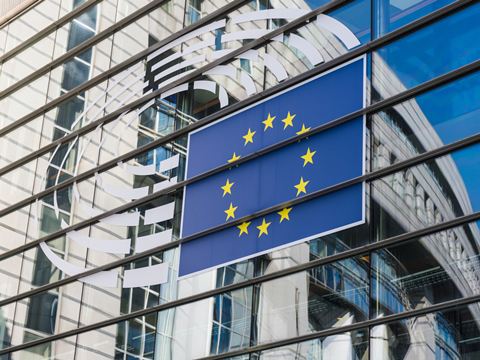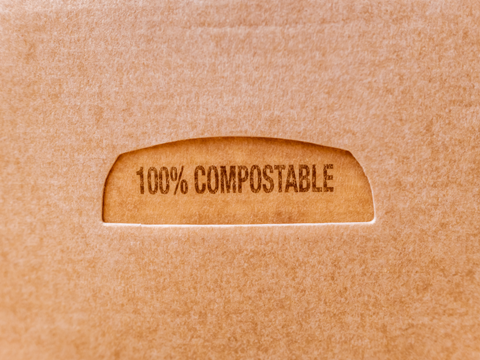
In a rush? Click here to read a short summary of this article
This report examines recent regulatory actions and legal developments aimed at curbing misleading environmental claims, or “greenwashing”, in advertising across the UK and EU. With consumer trust and environmental credibility on the line, authorities are tightening expectations on how businesses substantiate sustainability messaging.
- UK crackdown on vague green claims: The ASA banned ads from OceanSaver, Lavazza, and Dualit for overstating compostability and plastic-free credentials without clear, verifiable backing. Misleading simplifications like omitting the distinction between home and industrial composting were central to the rulings.
- Legal firepower behind ad regulators: While the UK’s ASA lacks direct fining powers, it can escalate cases to government bodies under the Digital Markets, Competition and Consumers Act 2024, which carries penalties of up to 10% of global turnover for misleading claims.
- Green Claims Directive falters: Once a flagship EU proposal to standardize and verify green claims, the Green Claims Directive has lost political momentum due to industry backlash and fears of burdening SMEs. Its future is now uncertain.
- Stricter EU-wide rules still moving forward: Regardless of the Directive’s fate, Directive 2024/825 and updates to the Unfair Commercial Practices Directive now ban vague claims like “climate-friendly” or “compostable” unless backed by specific, verified evidence.
- Voluntary schemes still play a role: Tools like the EU Ecolabel and ISO 14021 offer frameworks for businesses to make credible claims – but they require rigorous data and, in the Ecolabel’s case, third-party approval.
- Digital and product labelling under scrutiny: The New Consumer Agenda and Packaging Waste Directivestress the need for clearer, more accessible sustainability information—potentially via digital product passports—to help consumers make informed, responsible choices.
Regulators in the UK and EU are raising the bar for environmental marketing, targeting vague or unverifiable claims that risk misleading eco-conscious consumers. While voluntary labelling and life cycle tools remain valuable, companies must prepare for tighter, more enforceable requirements. With EU legislation in flux and UK enforcement intensifying, businesses should proactively audit and future-proof their green claims, or risk reputational and legal fallout.
As the European Commission withdraws its Green Claims Directive proposal, how else does EU law protect consumers from ambiguous or deceptive sustainability claims? We delve deeper into the legal landscape in this edition of the Brief.
In the UK, the Advertising Standards Authority is cracking down on misleading packaging claims made in product advertising. Following an investigation, OceanSaver has pulled a television advertisement describing the PVOH membrane of its laundry capsules as ‘plastic-free’ – as well as an advertisement on its website making unsubstantiated claims that PVOH is ‘one of the good plastics that are dissolvable and fully biodegrade’ and ‘contain zero microplastics’.
Paid-for search advertisements concerning Lavazza Coffee’s coffee pods and Dualit’s coffee bags have also been banned. Lavazza’s Eco Caps were described as ‘compostable capsules for your home’ despite their certification as industrially compostable, while Dualit described its product as just ‘compostable’ – neither of which the ASA considered a sufficiently thorough explanation of the products’ correct disposal.
The ASA is an independent and self-regulatory body funded by voluntary, arms-length levies from advertisers. It is not government-run and cannot enforce fines, but it can escalate complaints to other regulatory bodies, including the Trading Standards, Competition and Markets Authority, or even the Crown or Magistrates’ Court to take legal action wherever necessary.
On a higher level, the Digital Markets, Competition and Consumers Act 2024 prohibits misleading actions and omissions; this encompasses the provision of false or misleading information that risks deceiving a consumer into making a spending decision they would otherwise opt against, and/or the concealment of relevant information about the product or trader. Those found to violate the law could be fined up to 10% of their global turnover.
Still, the ASA considers its legal backstop a “last resort” and prioritizes collaboration with companies to ensure that their marketing is ethically sound.
A similar structure exists in mainland Europe. The European Advertising Standards Alliance (EASA) is comprised of other national advertising self-regulatory authorities and organizations, ranging from Österreichischer Werberat (ÖWR) to Reklam Özdenetim Kurulu (RÖK).
With them comes a network of national laws and regulations. However, for the sake of brevity, we will explore the rules and regulations at the EU level.
Green Claims Directive
Perhaps the first legislative measure to spring to mind would have been the proposed and often-discussed Green Claims Directive. Its aim is to mandate transparent, regularly reviewed environmental claims verified by an ‘independent and accredited’ third party.
More specifically, it concerns any voluntary claims made by businesses about the environmental impact, aspect, or performance of a product or business practice from raw materials to end-of-life that are not covered by existing legislation.
Generalized claims – for example, ‘packaging made of 30% plastic’ – would require verified, ex-ante substantiation with widely recognized scientific evidence. Any environmental impacts and trade-offs must be identified clearly.
Comparisons with other products and organizations must be ‘fair and based on equivalent information and data’. Supporting studies, certificates of conformity, and other science-based substantiations would be required; claims or labels that use aggregate scoring to quantify impacts on climate, soil, biodiversity, or other factors would be outlawed ‘unless set in EU rules’.
In a bid to prevent an influx of different options, environmental labelling schemes would be ‘solid and reliable’ with a ‘controlled’ proliferation. EU-level schemes would be favoured, so unless they are developed on this scale, new public schemes will not be permitted.
The Directive would also be expected to toughen measures on carbon offsetting claims, which the Commission describes as ‘particularly prone to being unclear and ambiguous’. Companies would be expected to transparently explain which part of a sustainability claim applies to their own operations, and which is achieved by purchasing offsets.
Concerns arose around the draft text during the negotiation process. Last summer, an industry statement argued that the draft Directive was not simple enough; that the amount of claims and labels requiring pre-verification could become burdensome and costly for traders, thus delaying the provision of important environmental information to consumers – especially since the European Council had, allegedly, failed to discuss deadlines for independent verifiers as of the statement’s publication.
It was also feared that the draft text could give rise to different approval systems between Member States, or require the same documentation as existing EU legislation and awarded labels, rather than focusing on claims not yet covered by law or certification processes.
Another, more recent joint statement warned that the Directive could turn out ‘unclear, impractical and costly’, enforcing ‘one-size-fits-all’ rules in too short an adjustment period. In the signatories’ view, this could become a slippery slope towards ‘green hushing’ – a practice in which companies do not publicize their ESG information or sustainability goals at all.
It also accused the Directive of contradicting the Commission’s existing Political Guidelines and Competitiveness Compass, as well as stepping on the toes of REACH, RoHS, and other pre-existing regulatory frameworks surrounding hazardous substances.
Since then, the Council has revealed its intent to withdraw the Directive’s proposal. After the European People’s Party told environment commissioner Jessika Roswall that it would not support any trialogue outcome, leading Poland and Italy to back out of further negotiations, the Council’s stance is that legalizing the draft text would place too heavy a burden on millions of micro-enterprises across the EU.
As of this Brief’s publication, the next course of action remains unclear – yet other existing laws are still in place to moderate environmental claims.
Unfair Commercial Practices Directive
Directive 2005/29/EC, or the Unfair Commercial Practices Directive, defines ‘green claims’ and ‘environmental claims’ as the suggestion via advertising, marketing, or commercial communication that a product or service is environmentally friendly – namely, that it has zero or positive impact on the environment, or that it causes less damage than market competitors.
While the core Directive does not centre around environmental claims specifically, a Commission Notice published in December 2021 provided a further guide to the Directive’s interpretation and application, including a clearer definition of inaccurate or misleading statements pertaining to environmental impact.
“The expressions ‘environmental claims’ and ‘green claims’ refer to the practice of suggesting or otherwise creating the impression (in a commercial communication, marketing or advertising) that a good or a service has a positive or no impact on the environment or is less damaging to the environment than competing goods or services,” the text reads.
“This may be due to its composition, how it has been manufactured, how it can be disposed of and the reduction in energy or pollution expected from its use. When such claims are not true or cannot be verified, this practice is often called ‘greenwashing’.”
Green claims are not prohibited under this measure; rather, the Directive aims to help traders accurately communicate the sustainability metrics of their products and prevent disingenuous advertising from benefiting their competitors. Yet this relies on prohibiting ‘unfair’ claims.
“In case environmental claims are made on the packaging of products and/or other communication channels (e.g. posters, billboards, magazines), which have limited space for specifications, the location of the main environmental claim and supplementary information about the claim should enable an average consumer to understand the link between both,” the text continues.
For example, a pack makes a prominent environmental claim on its front but clarifies the intricacies of this claim on the back, or in another less prominent area, could be considered misleading.
Additionally, making a general claim that a pack is ‘compostable’ without distinguishing between home and industrial compostability, or specifying the actions a consumer needs to take to compost it appropriately, are ‘likely’ to be misleading – as was the ruling for OceanSaver, Lavazza Coffee, and Dualit.
“If supplementary information is not provided or provided in an unclear or ambiguous manner, it may be considered misleading, depending on the assessment of the circumstances of the individual case,” the Directive adds. “If there is no space to specify the environmental claim, then the claim should generally not be made.”
Nor are the rules restricted to on-pack messaging. The amended Directive 2010/13/EU, or the Audiovisual Media Services Directive, states that Member States must ensure that media service providers under their jurisdiction do not distribute commercial communications that ‘encourage behaviour grossly prejudicial to the protection of the environment’.

Directive 2024/825
Directives 2005/29/EC, the aforementioned Unfair Commercial Practices Directive, and 2011/83/EU, the Consumer Rights Directive, have been amended by Directive 2024/825 – entering into force on 6th March to be transposed into Member State laws by 27th March 2026 and applied from the following September.
The revisions crack down on what are described as ‘generic’ environmental claims: i.e., claims that are not sufficiently verified. It raises the example of ‘climate-friendly packaging’ as a generic claim, as opposed to the more specific ‘100% of energy used to produce this packaging comes from renewable sources’, which would be permissible so long as the statement is accurate.
Another prohibited commercial practice is exaggerating the breadth of a claim. If a product is marketed as ‘made with recycled material’ but this description only applies to a certain component, it is considered misleading.
Similarly, a brand or company still transitioning away from fossil fuels should not suggest that its entire business only utilizes renewable energy; rather, it should specifically quantify its progress across the business so far.
Generic claims do not need to be written or oral to violate the law. Implicit messaging via images or colours used on-pack or in marketing materials could also be considered misleading under the new Directive.
To reiterate, though, it does not ban environmental claims entirely. If a bold claim can be verified as accurate, it is permitted. The point is to prevent vague, overstated claims from tricking sustainability-minded consumers into purchasing a product under false pretences.
EU Ecolabel Regulation and ISO 14021
EU Ecolabel Regulation (EC) No 66/2010 is a voluntary environmental labelling scheme intended to help consumers make informed spending decisions.
It may be applied to goods and services distributed, consumed, or otherwise used on the EU market, whether sold or offered for free – but this excludes human or veterinary medicinal products, as well as medical devices.
Utilizing scientific data from a cradle-to-grave Life Cycle Analysis, it considers the impact of a good or service on such environmental factors as the circular economy, climate change, nature and biodiversity, emissions and other substance releases, energy and resource consumption, the generation of waste, and pollution.
So, too, does it seek to substitute hazardous substances with safer alternatives. Products containing toxic, environmentally hazardous, carcinogenic, or mutagenic products, as defined by Regulation (EC) No 1272/2008, or substances subject to the regulatory framework for chemical management, cannot be awarded an EU Ecolabel.
Other considerations include durability and reusability, consumer health and safety, animal testing, and compliance with international labour standards, among other social and ethical interventions.
Economic operators can apply for a label, with a competent national body making the ultimate decision. At this point, a contract is drawn up to establish the terms of the label’s use or withdrawal; operators pay an application fee and are subject to an annual fee throughout the label’s use.
ISO 14021 is not too dissimilar, but it is a voluntary international standard and does not require third-party verification. It guides businesses through the appropriate conduct when making a claim in the form of a statement (e.g. ‘recyclable’ or ‘biodegradable’), symbol, or graphic, either on-pack or through supplementary advertising.
Declarations of this kind are not as holistic as an EU Ecolabel, since they do not take a whole life cycle approach, but they are arguably more specific than a symbol alone; they are also cheaper, and therefore more accessible to smaller businesses.
New Consumer Agenda
Additionally, the New Consumer Agenda provides a general outline for sector-specific legislation to address in more detail. For our purposes, it ties into the newly enforced Packaging and Packaging Waste Directive.
The Agenda lists Europe’s green transition as a key priority area and considers the provision of ‘better and more reliable’ information about a product or service’s sustainability aspect to be essential – yet it also seeks to avoid ‘information overload’.
“Consumers need to be better protected against information that is not true or presented in a confusing or misleading way to give the inaccurate impression that a product or enterprise is more environmentally sound,” the text reads.
Information on a product’s environmental characteristics – its durability, repairability, and upgradeability, to name a few examples – is set to become more accessible to consumers. The Agenda asserts that the rise of digital information, including digital product passports, could unlock a ‘more holistic’ overview of a product’s environmental and circular aspects; for instance, its carbon footprint.
This would give consumers the agency to fact-check the information provided to them, as well as compare different products’ impacts and make a more informed spending decision.
“Commercial practices that disregard consumers’ right to make an informed choice, abuse their behavioural biases, or distort their decision-making processes, must be tackled,” the Directive continues. “These practices include the use of ‘dark’ patterns, certain personalization practices often based on profiling, hidden advertising, fraud, false or misleading information and manipulated consumer reviews.
“Ultimately, consumers should benefit from a comparable level of protection and fairness online as they enjoy offline.”
The Commission’s suggestion is for businesses to utilize the Product and Organisation Environmental Footprint methods to substantiate any claims they make to consumers. These methods are based on Life Cycle Assessments and utilize existing approaches and standards, including the International Life Cycle Data (ILCD) guidelines and the ISO 14040 series.
The Commission also states that it “will examine ways to create a sustainable labelling framework that covers, in synergy with other relevant initiatives, the nutritional, climate, environmental and social aspects of food products.”
Accessibility is also prioritized, especially for the ‘specific consumption-related needs’ of disabled or elderly consumers.
“It is important to ensure that clear, user-friendly and accessible information is available both online and offline in accordance with EU accessibility requirements for products and services,” the Agenda adds.
If you liked this story, you might also enjoy:
The ultimate guide to the Packaging and Packaging Waste Regulation in 2025
How are the top brands progressing on packaging sustainability?
Everything you need to know about global packaging sustainability regulation in 2025
The key to increasing the use of reusable packaging in supermarkets






















No comments yet